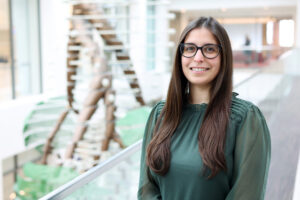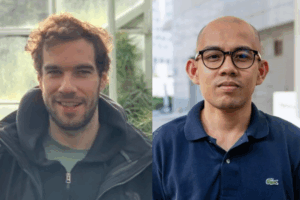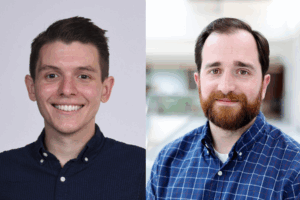“It’s such an honor to be selected to join the American Mathematical Society,” said de Fernex, professor and associate chair of the department. “It’s also gratifying to have my work recognized by my peers for contributing to the profession.”
As a child and throughout his school days, de Fernex always enjoyed math. At the University of Milan, he studied math in the morning and worked as an illustrator at an advertising agency in the afternoon. For a time, he gave up studying math and switched to architecture. “It was while studying architecture that I began to realize my true passion for math,” said de Fernex. “I was on a train to Venice with some friends when it hit me. They were majoring in math and telling me about the things they were learning. In that moment I realized how much I missed it.” He left architecture and advertising and began to see himself as a mathematician.
He completed his undergraduate degree and wrote a dissertation in the field of algebraic geometry. “What I like about algebraic geometry is the balance between intuition and mathematical rigor,” said de Fernex. “The algebraic part of it provides a powerful and rigid structure, which, paradoxically, gives geometry its flexibility.” Algebraic geometry has applications in many fields—for example, certain topics, such as Calabi-Yau manifolds, are important in string theory because they meet the supersymmetry requirement for the six “unseen” spatial dimensions of string theory.
He began working on his Ph.D. at the University of Genoa but later moved to the U.S. to complete his studies at the University of Illinois at Chicago. The importance of his work was recognized early on, and his research has been well-funded throughout his career. He has received various fellowships as well as support from the National Science Foundation (NSF) and the Simons Foundation. “The funding I received from the U’s John E. and Marva M. Warnock Presidential Chair in Mathematics and the NSF Career grant were especially helpful,” said de Fernex. “They funded my research and provided support for grad students and postdocs. The years supported by the NSF at the Institute for Advanced Study and later by the Simons Fellowship in my sabbatical year allowed me to fully focus on research and collaboration for extended periods of time.”
While de Fernex enjoys doing research, he is equally enthusiastic about teaching. “You never know where or when you’ll find talented students,” he said. “That’s what keeps teaching exciting and fulfilling.”




